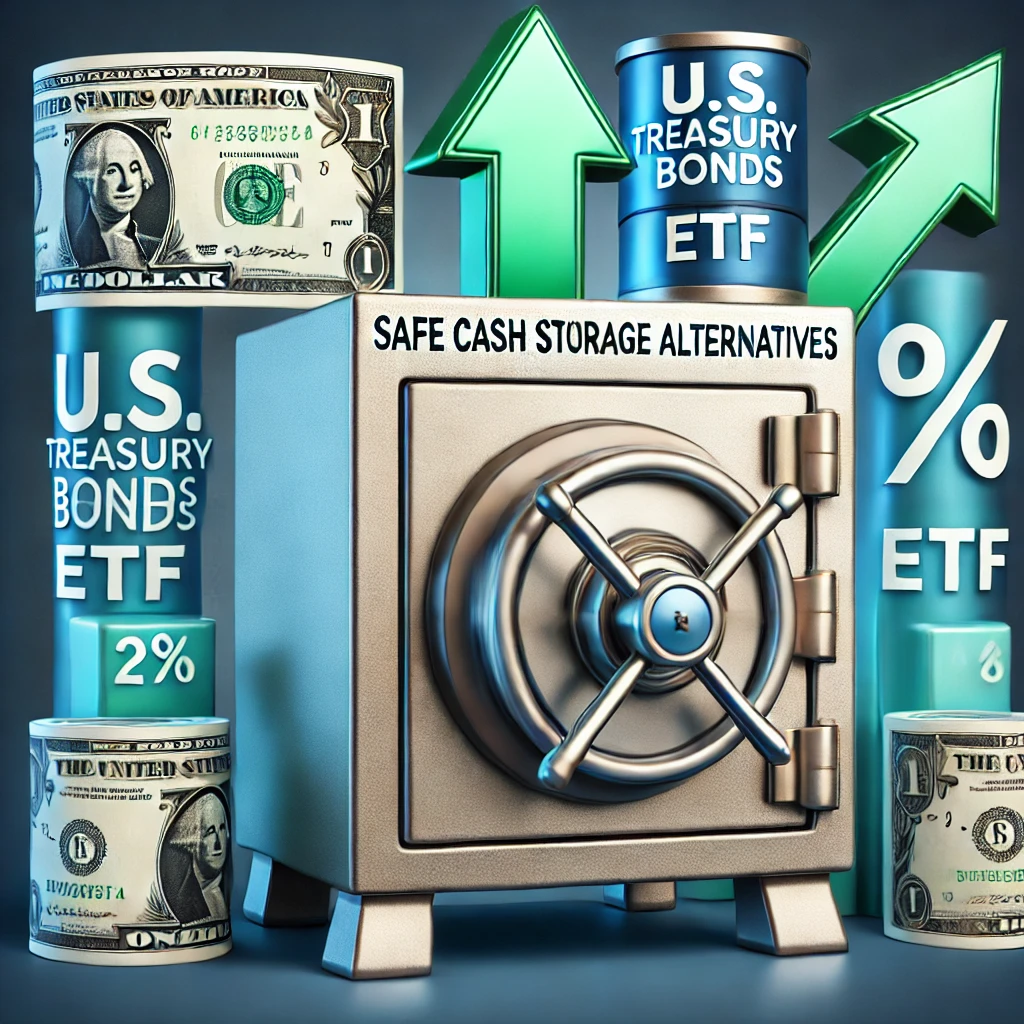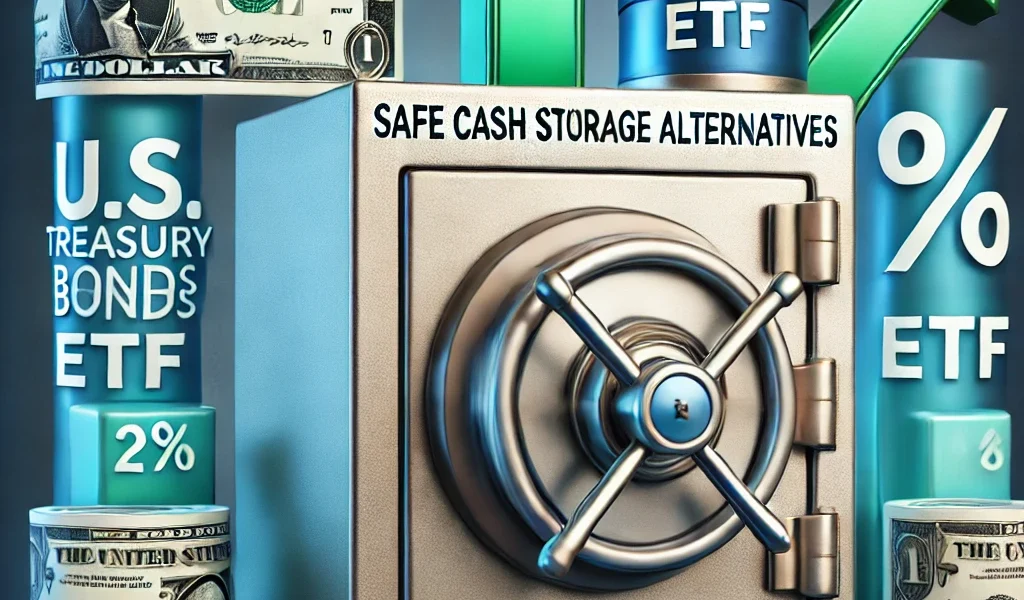Introduction
In today’s volatile market, storing cash safely is more important than ever. While traditional bank deposits may seem like the safest option, there are other alternatives that provide not only security but also better returns. In this article, we’ll explore why U.S. short-term Treasury bond ETFs are a compelling choice for holding your cash while offering monthly yields and liquidity.
Why Consider Alternatives to Bank Deposits?
Bank deposits, while convenient, typically offer low-interest rates, particularly in the current economic climate. Additionally, inflation can erode the value of cash sitting in a savings account. Investors are increasingly looking for better alternatives to protect and grow their cash reserves without taking on excessive risk.

Drawbacks of Bank Deposits:
- Low Interest Rates: Traditional bank accounts often fail to provide competitive returns.
- Inflation Impact: Cash in a savings account can lose purchasing power over time due to inflation.
What are Short-Term Treasury Bond ETFs?
One of the best alternatives to bank deposits is short-term Treasury bond ETFs. These ETFs invest in U.S. Treasury bonds with short maturities, typically ranging from 1 to 3 months. The main advantage of these bonds is their low risk, as they are backed by the U.S. government. In addition, short-term Treasury bond ETFs offer monthly income in the form of dividends, which can provide a higher return than many savings accounts.
Key Benefits of Short-Term Treasury Bond ETFs:
- Safety: U.S. Treasury bonds are considered one of the safest investments.
- Liquidity: Investors can easily buy and sell these ETFs, offering flexibility for those who need access to their cash.
- Monthly Income: These ETFs distribute monthly dividends, providing a steady stream of income.
The BIL ETF: A Popular Option
The SPDR Bloomberg 1-3 Month T-Bill ETF (BIL) is one of the most popular short-term Treasury bond ETFs available. This ETF focuses on U.S. Treasury bonds with maturities ranging from 1 to 3 months. It offers a competitive yield of approximately 5% and adjusts its portfolio on a monthly basis to capture the latest market rates.
Key Features of BIL:
- Competitive Yield: Offers around 5% annual yield, making it attractive compared to traditional savings accounts.
- Stable Price: The price of short-term bonds is less affected by interest rate changes, making this ETF a stable option for preserving capital.
- Regular Adjustments: The portfolio is rebalanced monthly, ensuring it remains aligned with current interest rates.
How Do Interest Rate Changes Affect Treasury ETFs?
The performance of short-term Treasury bond ETFs is closely tied to interest rate movements. When interest rates rise, these ETFs can offer higher yields, but when rates fall, the returns might decrease slightly. However, given their short duration, they tend to be less affected by rate changes than long-term bonds.
Conclusion
For those seeking an alternative to traditional bank deposits, short-term U.S. Treasury bond ETFs provide an excellent option. With higher yields, monthly income, and government-backed security, these ETFs are ideal for preserving and growing cash reserves. As inflation remains a concern, diversifying your cash storage strategy with options like BIL ETF could lead to better long-term results.










